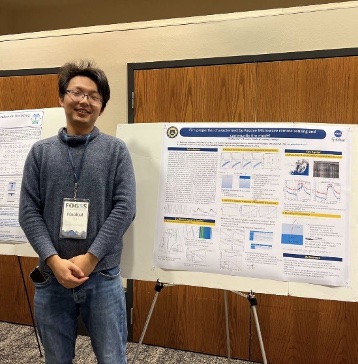Dissertation Defense
Electromagnetic modeling for the active and passive remote sensing of polar ice sheet and for Signal of Opportunity (SoOp) land observation
This event is free and open to the publicAdd to Google Calendar

PASSCODE: 107634
Microwave remote sensing is widely used for the geography studies. This presentation include 3 topics: 1. Simulation of the P-band near specular scattering . 2. Study of the firn density fluctuations. 3. Modeling for the perennial firn aquifer for the study of liquid water content.
Rough surface near specular study in the P-band is for the application of Signal of Opportunity SAR concept. In Signal of Opportunity, receivers are in the forward direction of the transmitter. We use the real land profile from lidar measurements over Grand Mesa, CO the evaluation of bistatic scattering for various azimuthal scattering angles. Simulation results show that the bistatic scattering coefficients are of great values.
In the study of firn density fluctuations and the firn aquifer we use the radiometer data. Radiometers are sensitive instruments with accuracy within 2K. Forward models are built for the simulation of measurements over the polar ice sheets. The reduction of the emission from density variations is accounted for by a radiative transfer model. For the aquifer liquid water study, full wave approach is implemented for the effective permittivity of aquifer. Results have explained the brightness temperature observations.
CHAIR: Professor Leung Tsang
 MENU
MENU 
